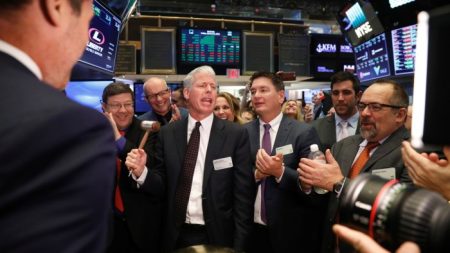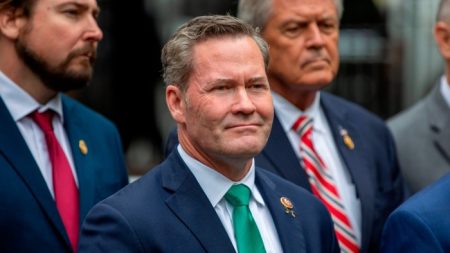Stay informed with free updates
Simply sign up to the UK employment myFT Digest — delivered directly to your inbox.
UK wage growth eased by less than expected in the three months to December, according to official data that will give the Bank of England new grounds for caution over the timing of a first cut in interest rates.
The annual pace of growth in average weekly earnings, including bonuses, slowed to 5.8 per cent over the period, the Office for National Statistics said on Tuesday.
The figure was down from a summer peak of 8.5 per cent and from 6.7 per cent in the three months to November. But November’s figure was revised up and the subsequent slowdown was less than analysts had predicted.
Hugh Gimber, global market strategist at JPMorgan Asset Management, said that while it was good news for consumers that wage growth was now comfortably outpacing inflation, the BoE would view the data “through a different lens”, with “significantly more evidence of cooling likely required” before it would consider cutting rates.
Andrew Goodwin, economist at the consultancy Oxford Economics, said the combination of a tight labour market and solid wage growth was likely “to lead the Monetary Policy Committee to take a cautious approach to the timing and pace of rate cuts”.
Annual growth in earnings excluding bonuses slowed to 6.2 per cent, compared with 6.7 per cent in the three months to November.
Rate-setters are watching wages closely because they believe it will be harder to return inflation to the 2 per cent target if companies pass higher wage bills on to consumers. In December, inflation stood at 4 per cent.
Investors pushed back bets on BoE rate cuts on Tuesday morning, and were placing a 60 per cent probability on the UK’s first quarter-point interest rate cut being delivered in June — down from a 75 per cent chance before the data’s release. Sterling nudged 0.17 per cent higher to $1.2647.
Investors were reacting partly to the wage figures and partly to a new ONS estimate of unemployment, released in the first near-complete set of data the ONS has published since September based on its labour force survey (LFS).
This suggested the jobless rate fell to 3.8 per cent in the last months of 2023, below its pre-pandemic rate and unchanged on the year.
The ONS said the employment rate had also risen to 75 per cent in the latest quarter, after a previous dip, but remained down on the year. This was because the UK’s economic inactivity rate — the share of adults who are neither in work not job-seeking — remained higher than a year ago at 21.9 per cent.
The figures came with a warning from the ONS because they are based on a smaller sample size than usual. The agency resumed publication of LFS-based data after reweighting it to reflect new information on the population, which showed the UK’s workforce to be bigger but more prone to ill health than previously thought.
But recent results are still liable to be volatile and the ONS is not able to publish a full back series of the data, or all of the usual breakdowns.
However, both the ONS and analysts said the data now looked more closely aligned with evidence from tax records and other recent surveys.
Neil Carberry, chief executive of the Recruitment & Employment Confederation, said the figures looked likely to have “a grain of truth in them”, matching the REC’s own findings that hiring had slowed in the spring and summer of 2023 but recently shown more resilience.
“It is clear that growth in employment has slowed over the past year,” said Liz McKeown, ONS director of economic statistics, pointing to an ongoing decline in vacancies, and a slower rate of increase in payroll employment.
The unemployment rate was unchanged over the year as a whole, the agency noted, and this was compatible with the broadly steady trend seen in claims for out-of-work benefits.
Even with caveats over the data, “today’s figures did little to dispel the impression that the job market is very tight”, said Investec economist Sandra Horsfield, suggesting “caution is likely to prevail at the BoE when deciding how soon and how quickly to cut interest rates”.
“Rumours of a decline in the UK economy have been greatly exaggerated. In fact, almost all the data in the last couple of months points to a re-acceleration . . . and — based on the LFS data at least — the jobs market looks remarkably strong,” said Elizabeth Martins, economist at HSBC.
Read the full article here














